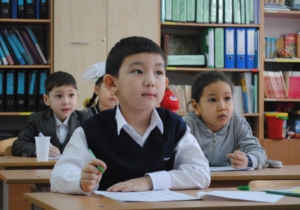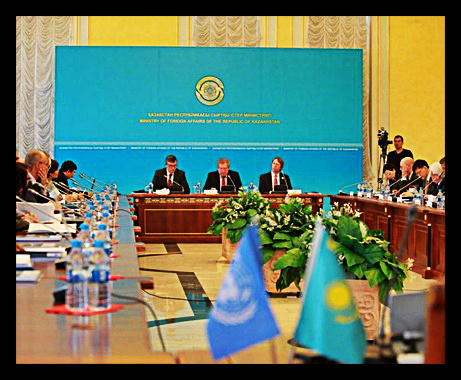 In 2011, the Kazakhstani government requested technical assistance to improve the nation’s educational system. In response, the World Bank Group launched the Joint Economic Research Program, or JERP, in order to enhance the quality of education in Kazakhstan with particular regards to Kazakhstan’s secondary education student assessment system.
In 2011, the Kazakhstani government requested technical assistance to improve the nation’s educational system. In response, the World Bank Group launched the Joint Economic Research Program, or JERP, in order to enhance the quality of education in Kazakhstan with particular regards to Kazakhstan’s secondary education student assessment system.
Kazakhstan’s educational system has seen improvements in recent years, including rapid expansion of access to preschool education, nearly universal secondary education completion and improved technical, vocational and higher education.
According to UNICEF and the World Bank, Kazakhstani youth literacy rates currently stand around 99.8 percent, gross primary school enrollment stands at over 100 percent and gross secondary school enrollment stands at around 97 percent.
Improving Education in Kazakhstan
Nevertheless, there is still room for improvement, particularly in terms of preparing Kazakhstani students for the labor market. In particular, gross tertiary school enrollment rates (post-secondary or university education rates expressed as a percentage of the population that completed secondary school in the past five years) stood at 45 percent in 2012. In contrast, U.S. gross tertiary enrollment rates stood at 94 percent for the same year.
Upon launching JERP in 2011, the World Bank provided “research and advisory support” to the Kazakhstani government during the educational reform process.
Specifically, the World Bank analyzed Kazakhstan’s results on educational assessments and provided recommendations for improvements; new benchmarks for student assessments, school autonomy and accountability and teacher policies; and hosted capacity-building seminars.
Recently, the Kazakhstani government requested a new extension of the assistance program, with a focus on implementing the policy recommendations that emerged from the first phase. The second phase, which will continue through 2017, will focus on improving school and teacher/principal evaluations.
– Katrina Beedy
Sources: UNICEF, The World Bank 1, The World Bank 2
Photo: Flickr







